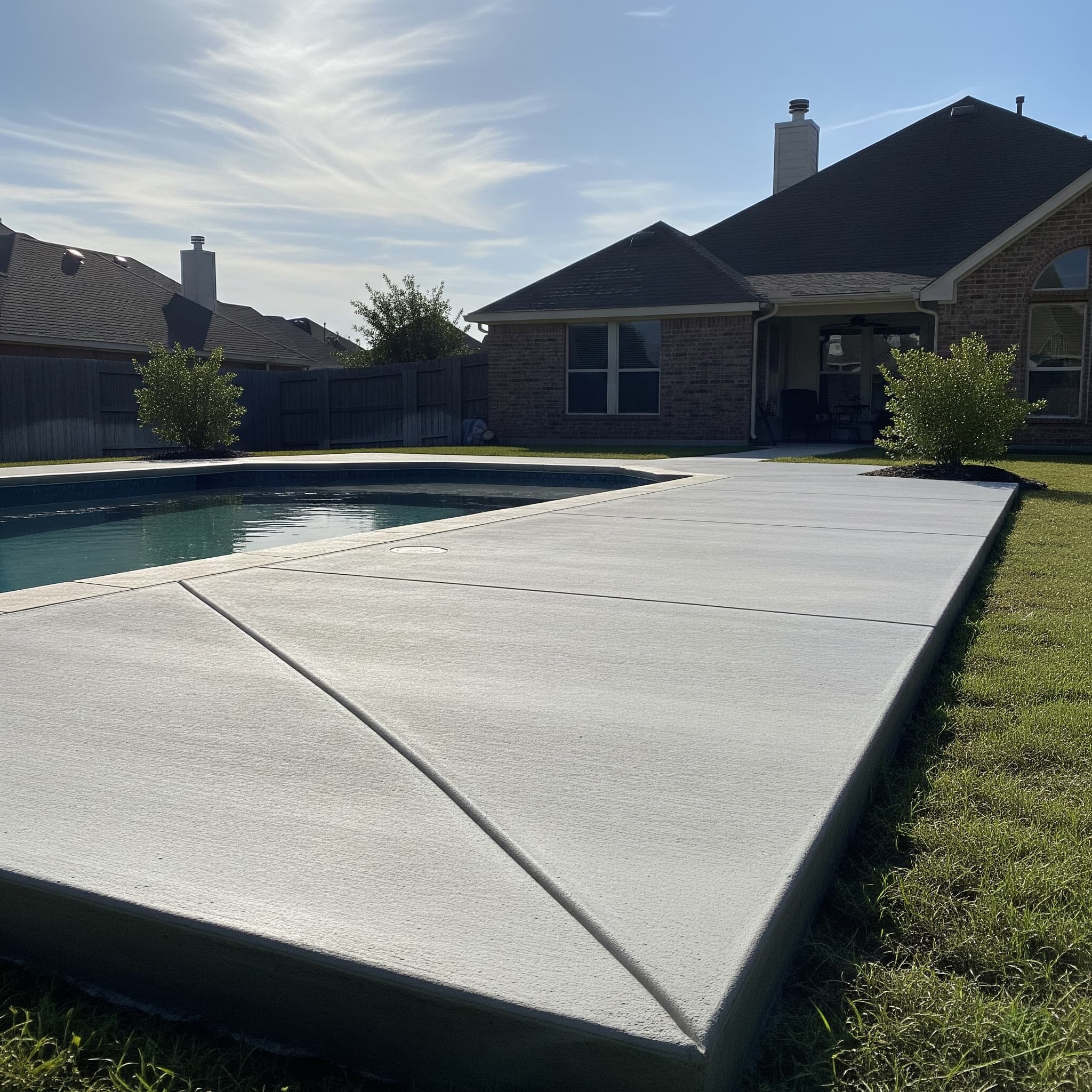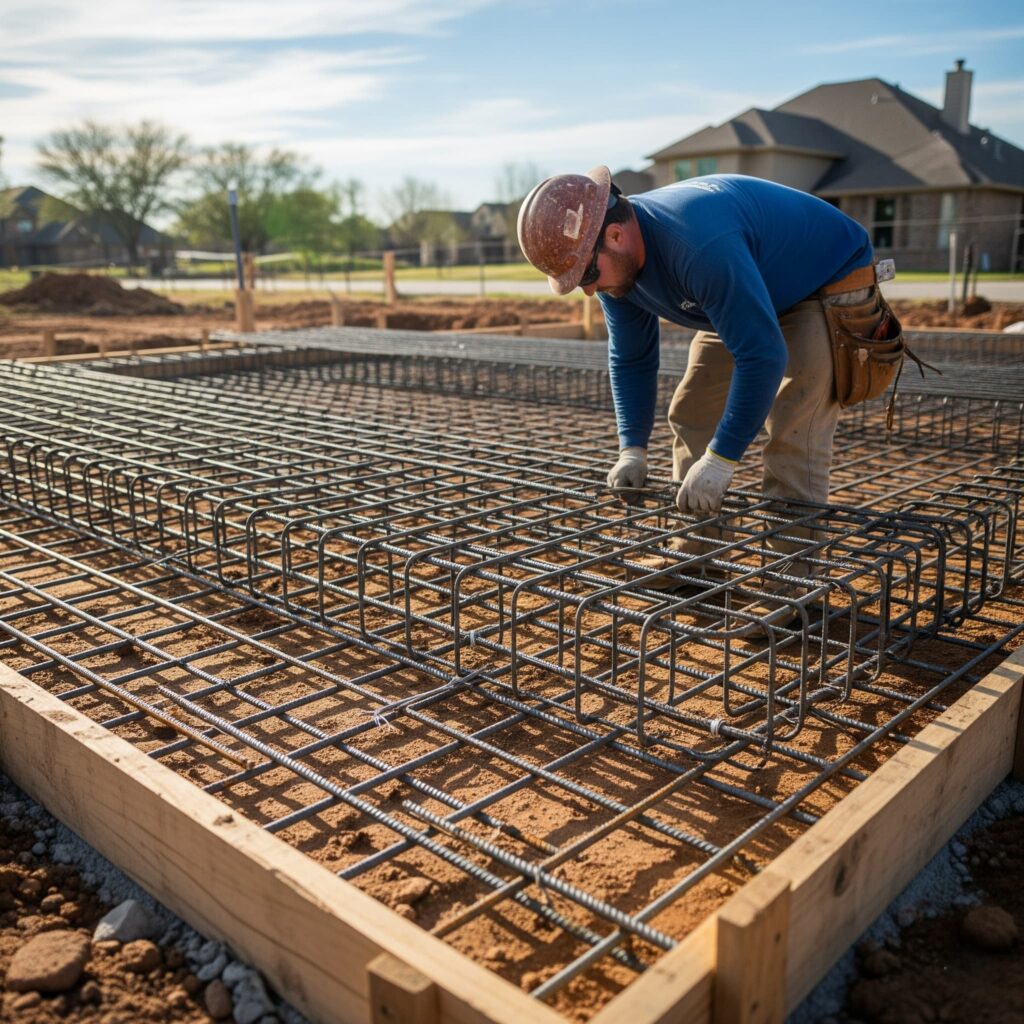
When to Use Rebar vs. Wire Mesh in Concrete Slab Construction
Concrete Slab
Selecting appropriate reinforcement for concrete slab construction requires understanding the specific benefits and limitations of both rebar and wire mesh systems. Each reinforcement type serves distinct purposes in concrete construction, with rebar providing superior tensile strength for heavy-load applications while wire mesh offers cost-effective crack control for lighter-duty installations. Project requirements including load expectations, slab thickness, environmental conditions, and budget constraints all influence the optimal reinforcement choice. Grand Prairie’s expansive clay soils and extreme temperature variations create additional considerations that affect reinforcement selection and placement strategies. Professional contractors evaluate these factors comprehensively to recommend reinforcement systems that ensure long-term structural integrity and performance.

Understanding Concrete Reinforcement Fundamentals
Why Concrete Needs Reinforcement
Concrete possesses excellent compressive strength but lacks adequate tensile strength to resist bending forces, thermal expansion, and shrinkage stresses. Without reinforcement, concrete slabs crack under normal conditions, creating structural weaknesses and aesthetic problems that reduce longevity and performance.
Steel reinforcement provides the tensile strength that concrete lacks, creating composite systems that resist both compression and tension forces. Wire mesh and rebar are roughly the same strength, with 55,000 psi yield strength, but their physical characteristics and applications differ significantly.
How Reinforcement Functions
Steel and concrete have similar expansion properties when it comes to temperature changes, allowing reinforcement to work effectively without creating internal stress concentrations. As concrete shrinks during curing or thermal cycling, steel reinforcement limits crack width and prevents crack propagation throughout the slab.
Proper reinforcement placement positions steel at optimal locations within the concrete cross-section to maximize effectiveness. Both rebar and welded wire fabric do this equally well when positioned properly in the center of the slab or slightly above mid-depth.
Rebar Characteristics and Applications
Structural Advantages of Rebar
Rebar provides superior tensile strength and structural capacity compared to wire mesh, making it essential for heavy-load applications and structural concrete slabs. The deformed surface of rebar creates excellent mechanical bonding with concrete, ensuring load transfer efficiency during stress events.
Individual rebar placement allows precise reinforcement design tailored to specific load patterns and structural requirements. This flexibility proves particularly valuable for complex slab configurations or areas with concentrated loads such as equipment pads or heavy vehicle traffic zones.
Optimal Rebar Applications
Driveways supporting heavy vehicles benefit significantly from rebar reinforcement, particularly near street entrances where trucks and delivery vehicles create concentrated loads. Commercial applications, including parking lots, warehouse floors, and industrial slabs, require rebar to meet structural design requirements.
Thick concrete slabs over 5 inches typically require rebar reinforcement to achieve adequate crack control and structural performance. Foundation systems, including footings, stem walls, and structural slabs, depend on rebar for required strength and durability characteristics.
Wire Mesh Properties and Uses
Cost-Effective Crack Control
Wire mesh provides economical reinforcement for residential applications where structural loads remain moderate and crack control represents the primary concern. The welded grid pattern distributes reinforcement uniformly across slab areas, providing consistent crack resistance.
Installation efficiency makes wire mesh attractive for large area applications where labor costs significantly impact project budgets. Sheets install faster than individual rebar placement, reducing overall construction time and associated expenses.
Appropriate Wire Mesh Applications
Residential patios, sidewalks, and light-duty driveways perform well with wire mesh reinforcement when properly specified and installed. These applications typically involve foot traffic and light furniture loads that remain within wire mesh capacity limitations.
Thin concrete slabs between 3.5 and 4 inches thick often utilize wire mesh for crack control while maintaining cost-effectiveness. Garage floors, basement slabs, and similar residential applications frequently employ wire mesh reinforcement successfully.
Load Requirements and Application Criteria
Heavy-Load Applications
Vehicle traffic creates dynamic loads that exceed static calculations, requiring robust reinforcement systems capable of handling repeated stress cycles. Rebar provides the strength and fatigue resistance necessary for driveways, parking areas, and commercial slabs experiencing regular traffic.
Industrial applications, including equipment foundations, machinery pads, and warehouse floors, demand rebar reinforcement to meet structural design requirements. These installations often specify minimum reinforcement ratios that only rebar can satisfy within practical thickness limitations.
Light-Duty Installations
Residential applications with minimal structural demands allow wire mesh reinforcement while maintaining adequate performance and cost control. Patios supporting outdoor furniture and light equipment remain within wire mesh capacity when properly designed and installed.
Decorative concrete applications, including stamped patios and walkways, typically utilize wire mesh for crack control without compromising aesthetic results. The uniform reinforcement distribution prevents localized cracking that could interfere with decorative patterns.
Installation Considerations
Rebar Installation Requirements
Professional rebar installation requires precise spacing, proper support systems, and adequate concrete cover to ensure optimal performance. Rebar chairs maintain proper elevation throughout the pour, preventing settlement that reduces effectiveness.
Splice requirements for rebar connections follow specific overlap and tie specifications that ensure continuity across joints. These details prove critical for structural applications where load transfer between reinforcement elements affects overall system performance.
Wire Mesh Installation Practices
Wire mesh installation requires careful attention to prevent displacement during concrete placement while maintaining proper positioning within the slab cross-section. Lap joints between sheets must provide adequate overlap to ensure reinforcement continuity.
Sheet installation proves easier than individual rebar placement but requires proper support to prevent sagging under concrete weight. Professional contractors use appropriate supports spaced to maintain mesh elevation throughout the placement process.
Climate and Environmental Factors
Texas Climate Considerations
Grand Prairie’s extreme temperature variations create significant thermal stress in concrete slabs, requiring reinforcement capable of accommodating expansion and contraction cycles. Rebar provides superior performance under these conditions due to its structural capacity and dimensional stability.
Expansive clay soils throughout North Texas create additional stresses that affect reinforcement selection and design. Professional installations account for soil movement potential when specifying reinforcement type and placement requirements.
Corrosion Protection Requirements
Adequate concrete cover protects both rebar and wire mesh from corrosion, with minimum cover requirements varying based on exposure conditions and reinforcement type. Proper cover prevents rust-related problems that compromise structural integrity over time.
Galvanized or epoxy-coated reinforcement provides enhanced corrosion protection in aggressive environments, extending service life and maintaining structural performance. These protective coatings prove particularly valuable in areas with high moisture exposure or chemical contamination.
Cost Analysis and Value Considerations
Initial Investment Comparison
Wire mesh typically costs less than rebar for material and installation, making it attractive for budget-conscious projects where structural requirements permit its use. However, the cost difference often represents a small percentage of total project expenses.
Rebar costs more initially but provides superior long-term value through enhanced durability and reduced maintenance requirements. The investment often proves worthwhile for applications where structural performance and longevity remain priorities.
Long-Term Value Assessment
Proper reinforcement selection prevents costly repairs and premature replacement, providing excellent return on investment over the slab’s service life. Inadequate reinforcement leads to cracking, settlement, and structural problems that require expensive remediation.
Professional specification ensures reinforcement matches application requirements while optimizing cost-effectiveness. This approach prevents over-reinforcement waste while ensuring adequate performance for intended use conditions.
Combined Reinforcement Systems
Hybrid Approaches
Some applications benefit from combined rebar and wire mesh systems that optimize both structural strength and crack control. Deformed rebar provides strength and reinforcement, while stainless steel mesh grid ensures correct placement and crack distribution.
Heavy-duty driveways and commercial slabs often employ both reinforcement types to meet structural requirements while providing comprehensive crack control. This approach maximizes performance while addressing specific application demands.
Strategic Placement Methods
Strategic reinforcement placement concentrates stronger materials in high-stress areas while utilizing economical options elsewhere. This approach optimizes material usage while ensuring adequate performance throughout the slab area.
Professional design identifies critical areas requiring enhanced reinforcement while specifying appropriate materials for standard zones. This methodology balances performance requirements with cost considerations effectively.
Quality Control and Inspection
Installation Verification
Professional inspection ensures reinforcement placement meets design specifications and industry standards throughout the installation process. Proper positioning, spacing, and support verification prevent performance problems in completed installations.
Documentation of reinforcement installation provides valuable records for quality assurance and future reference. These records prove particularly important for structural applications where building codes require inspection verification.
Performance Monitoring
Regular inspection of completed slabs identifies any reinforcement-related problems before they compromise structural integrity. Early detection allows corrective action that prevents costly repairs or replacement requirements.
Professional maintenance programs include reinforcement condition assessment as part of comprehensive slab evaluation procedures. This monitoring ensures continued performance throughout the design service life.
Professional Specification and Design
Engineering Requirements
Structural applications require professional engineering design that specifies appropriate reinforcement based on load calculations, environmental conditions, and performance requirements. These specifications ensure compliance with building codes and industry standards.
Professional contractors understand when engineering input becomes necessary and coordinate with appropriate professionals to ensure proper reinforcement selection. This collaboration prevents problems while optimizing system performance and cost-effectiveness.
Local Code Compliance
Grand Prairie building codes establish minimum requirements for concrete reinforcement based on application type and structural demands. Professional installations ensure compliance with these requirements while meeting or exceeding performance expectations.
We at Grand Prairie Concrete Pros evaluate each project’s specific requirements to recommend optimal reinforcement solutions that balance performance, cost, and regulatory compliance. Our extensive experience with local soil conditions, climate factors, and building requirements ensures appropriate reinforcement selection for every application. From residential patios to commercial slabs, we specify and install reinforcement systems that provide lasting performance while meeting budget constraints and timeline requirements.



